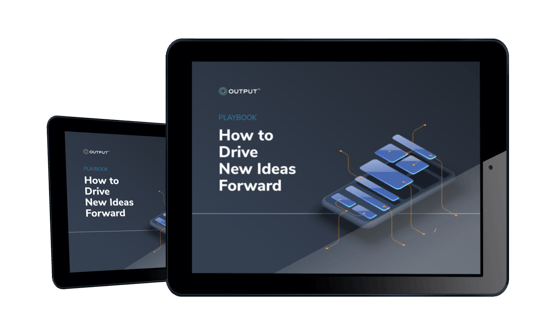Testing business ideas can be exciting; maybe you have a new product innovation or internal process improvement that you just know is going to be a hit, and all you need is the data to prove it. Unfortunately, teams can run into significant challenges when testing ideas; poor planning, ineffective experiments, lack of autonomy, biases and assumptions are just some of the obstacles that can affect the testing process.
To help you mitigate these challenges, we've compiled our top four pitfalls for testing business ideas with actionable tips that will keep you on track.
During the planning stage of your experiment, you should select your target audience — or "customer". During this stage, you'll also identify:
Maintain this focus when you move into experimentation — design and conduct experiments to test your assumptions with your target audience.
It's important to note that not every target audience will have the same problems, jobs to be done, pain relievers or gain creators. Once your audience is cemented, you must try your best not to stray away from it. Testing with too many stakeholders at once (multiple internal roles, multiple customer types, etc.) adds unnecessary variables to the equation, making it difficult to identify which one(s) actually influenced your results. The goal is to obtain reliable data and learn quickly. To keep your data as high quality as possible, keep your audience focused.
The temptation to put new ideas through the rigors of a fully formed business strategy — such as projecting its ROI, costs or formal business plan — can be strong. But requiring this type of information from a new idea without testing a single variable is unrealistic and misleading because no one really knows yet!
When you get started, it's more important to focus on the desirability of the idea — do people want or need it? Can this idea actually solve the problem at hand? The best companies realize there is no recipe for selecting the best ideas and understand this process is one of discovery, thus enabling their teams to do that discovery.
Resist the temptation to jump ahead and identify resource constraints or other barriers. The solution is rarely fully formed enough at this stage to identify the right barriers clearly. Ultimately, the goal at this stage is to learn as quickly as possible whether the idea has any merit so you can make an informed decision to persevere, pivot or abandon the idea. Learning to design and run experiments to obtain data quickly to inform the desirability of an idea will mitigate the risk that undesirable ideas get driven forward, tying up valuable resources and wasting time.
The unfortunate truth in large organizations is that when ideas reach a certain momentum in development with allocated teams and resources (sunk costs), it becomes increasingly difficult to overcome bias and abandon those ideas.
The biggest pitfall when testing business ideas is failing to test assumptions. No matter how well you think you know your employees or customers, or how obvious you think something might be, the truth is often counterintuitive.
You need to be rigorous about identifying and documenting your assumptions. This includes identifying what needs to be true for your idea to succeed and what you think you know about the idea and target audience. If these claims aren't supported by reliable evidence, then they're assumptions! To avoid blind spots and surprises, assumptions must be validated with evidence. This doesn't mean you need to test all of your assumptions (and doing so would be impractical) but you should be aware of all of your assumptions and evaluate their importance carefully.
As with assumptions, you need to be aware of and identify biases that affect your decision making. Many biases often operate outside of one's conscience, making them challenging to manage — yet they influence almost all of our decisions. Examples include the availability bias, confirmation bias and sunk cost bias, to name a few. Tackling implicit bias takes persistent personal and organizational reflection, but fostering open communication, self-awareness and emotional intelligence can get you started on the path to identifying and addressing these barriers.
Successfully testing business ideas requires momentum and freedom. Too much red tape and oversight can slow down your results or steer the idea (often unintentionally) in the wrong direction. If you want your project teams to approach new ideas with a beginner's mind, you can't micromanage the process; teams need enough autonomy and freedom to pursue and respond to the evidence they find with agility. To borrow from Marty Cagan, remember that you want missionaries, not mercenaries. If you've ever seen an innovation project drag on through multiple checkpoints simply to fail or get abandoned, you probably know what we're talking about.
Teams that don't have the autonomy to drive decision making can suffer greatly. Take, for example, the tragic ending of the 1986 Challenger; multiple engineers on the project reported critical issues with the space shuttle to their supervisors before launch, but the team did not have any autonomy to delay the launch on their own. NASA officials proceeded with the launch despite the engineers' concerns, leading to the shuttle's unfortunate ending.
While this is an extreme example of what can happen when teams are not given autonomy, it's easy to see how these effects can be easily proliferated on a smaller scale. Finding the right balance between oversight and autonomy can take time, but doing so pays significant rewards with more agile, responsive and effective solutions.
At Output, we know it's not adequate to just have good ideas; to truly spark change, you need the data — and confidence — to make agile decisions and implement winning solutions.
To help you with this process, we compiled a free Playbook on How to Drive New Ideas Forward. In it, you'll find seven actionable tips that will turn your promising ideas into proven business strategies. Download your free copy today to get started!

170 - 422 Richards Street
Vancouver BC V6B2Z4